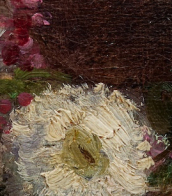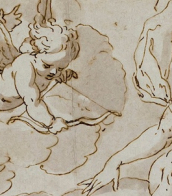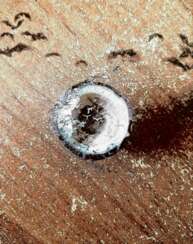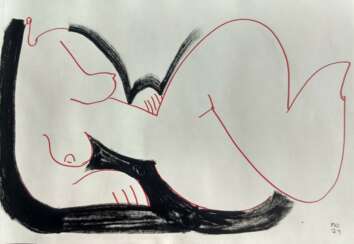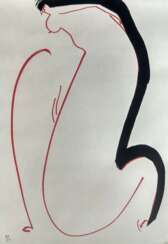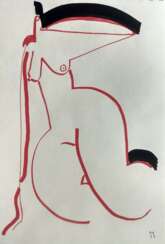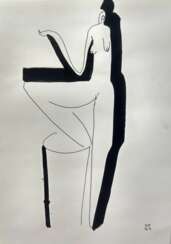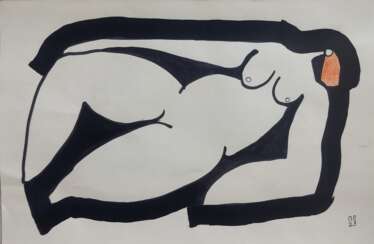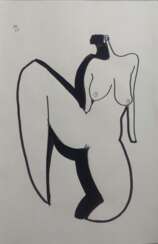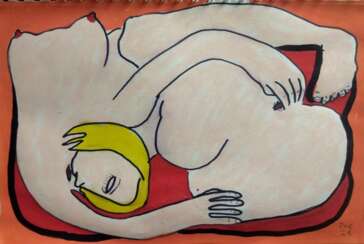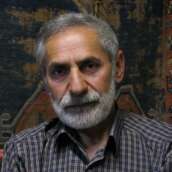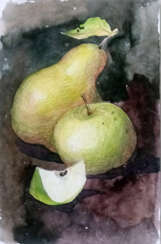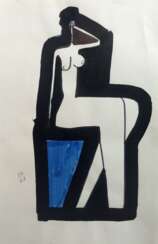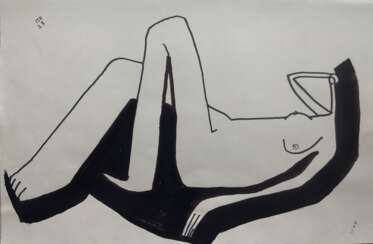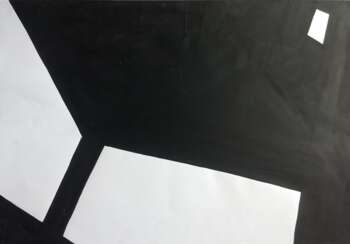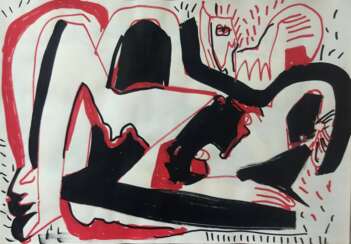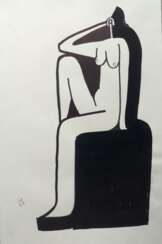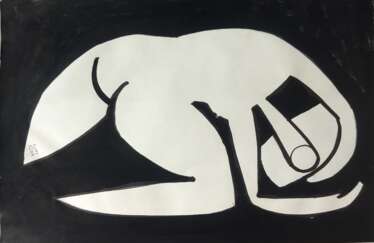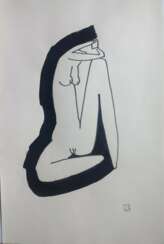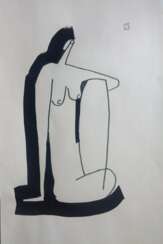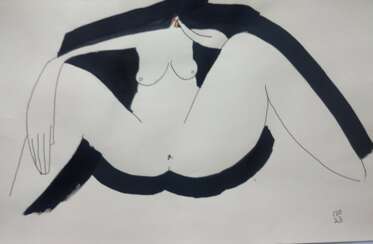49 Items by auctions and galleries:
view graphic
Lacy
Leonid Stroganov (b. 1979)  Shop Stroganov Leonid
Shop Stroganov Leonid

Leonid Stroganov
24.11.1979
Russia
Я родился в 1979 году в Ленинграде.В 1999 году закончил СПбХУ им Рериха,факультет живописи,а в 2002 году Институт Декоративно-Прикладного Искусства,факультет графики.Член Союза Художников России с 2002 года.В 2006 году прошел стажировку в Институте Тамаринд(США)Провел около 15 персональных выставок в музеях,выставочных залах и галереях России,Дании,Финляндии и Швейцарии.В жанре "Книга художника"создал книги " Царь Эдип" Софокла и "Эротические сонеты" Абрама Эфроса.Для идательства "Вита -Нова" выполнил иллюстрации к "Сонетам" Франческо Петрарки и Книге Пророка Исаии.
являюсь автором приблизительно 100 книжных знаков.Принимал участие в конгрессах международной федерации экслибриса(FISAE).Неоднократно становился лауреатом всероссийских имеждународных конкурсов в этой области.
Мои работы находятся в собраниях:Библиотеки Государственного Эрмитажа и его филиала-Выставочного центра "Эрмитаж-Выборг",Государственной публичной библиотеки им.М.Е.Салтыкова-щедрина,Всероссийского музея А.С.Пушкина,Литературно-мемориального музея-квартиры Ф.М.Достоевского,Сахалинского областного художественного музея,Государственного музея изобразительных искусств республики Татарстан,Ямало-Ненецкого окружного музейно-выставочного комплекса им И.С. Шемановского(Салехард),картинной галереи Вологодской области,музеев изобразительных искусств Старого Оскола,Орла,Екатеринбурга,Музея замка Мальборк (Польша),музея графики малых форм(Сент-Никлаас,Бельгия)Института Тамаринд (США),Музея печати в Шеньчжене(Китай),Музея искусств Фредериксхавна(Дания) и частных собраниях.

Artist shop
Stroganov Leonid
Russia
Number of products: 61
Izmailovsky bridge
Leonid Stroganov (b. 1979)  Shop Stroganov Leonid
Shop Stroganov Leonid

Leonid Stroganov
24.11.1979
Russia
Я родился в 1979 году в Ленинграде.В 1999 году закончил СПбХУ им Рериха,факультет живописи,а в 2002 году Институт Декоративно-Прикладного Искусства,факультет графики.Член Союза Художников России с 2002 года.В 2006 году прошел стажировку в Институте Тамаринд(США)Провел около 15 персональных выставок в музеях,выставочных залах и галереях России,Дании,Финляндии и Швейцарии.В жанре "Книга художника"создал книги " Царь Эдип" Софокла и "Эротические сонеты" Абрама Эфроса.Для идательства "Вита -Нова" выполнил иллюстрации к "Сонетам" Франческо Петрарки и Книге Пророка Исаии.
являюсь автором приблизительно 100 книжных знаков.Принимал участие в конгрессах международной федерации экслибриса(FISAE).Неоднократно становился лауреатом всероссийских имеждународных конкурсов в этой области.
Мои работы находятся в собраниях:Библиотеки Государственного Эрмитажа и его филиала-Выставочного центра "Эрмитаж-Выборг",Государственной публичной библиотеки им.М.Е.Салтыкова-щедрина,Всероссийского музея А.С.Пушкина,Литературно-мемориального музея-квартиры Ф.М.Достоевского,Сахалинского областного художественного музея,Государственного музея изобразительных искусств республики Татарстан,Ямало-Ненецкого окружного музейно-выставочного комплекса им И.С. Шемановского(Салехард),картинной галереи Вологодской области,музеев изобразительных искусств Старого Оскола,Орла,Екатеринбурга,Музея замка Мальборк (Польша),музея графики малых форм(Сент-Никлаас,Бельгия)Института Тамаринд (США),Музея печати в Шеньчжене(Китай),Музея искусств Фредериксхавна(Дания) и частных собраниях.

Artist shop
Stroganov Leonid
Russia
Number of products: 61
Bell-tower
Leonid Stroganov (b. 1979)  Shop Stroganov Leonid
Shop Stroganov Leonid

Leonid Stroganov
24.11.1979
Russia
Я родился в 1979 году в Ленинграде.В 1999 году закончил СПбХУ им Рериха,факультет живописи,а в 2002 году Институт Декоративно-Прикладного Искусства,факультет графики.Член Союза Художников России с 2002 года.В 2006 году прошел стажировку в Институте Тамаринд(США)Провел около 15 персональных выставок в музеях,выставочных залах и галереях России,Дании,Финляндии и Швейцарии.В жанре "Книга художника"создал книги " Царь Эдип" Софокла и "Эротические сонеты" Абрама Эфроса.Для идательства "Вита -Нова" выполнил иллюстрации к "Сонетам" Франческо Петрарки и Книге Пророка Исаии.
являюсь автором приблизительно 100 книжных знаков.Принимал участие в конгрессах международной федерации экслибриса(FISAE).Неоднократно становился лауреатом всероссийских имеждународных конкурсов в этой области.
Мои работы находятся в собраниях:Библиотеки Государственного Эрмитажа и его филиала-Выставочного центра "Эрмитаж-Выборг",Государственной публичной библиотеки им.М.Е.Салтыкова-щедрина,Всероссийского музея А.С.Пушкина,Литературно-мемориального музея-квартиры Ф.М.Достоевского,Сахалинского областного художественного музея,Государственного музея изобразительных искусств республики Татарстан,Ямало-Ненецкого окружного музейно-выставочного комплекса им И.С. Шемановского(Салехард),картинной галереи Вологодской области,музеев изобразительных искусств Старого Оскола,Орла,Екатеринбурга,Музея замка Мальборк (Польша),музея графики малых форм(Сент-Никлаас,Бельгия)Института Тамаринд (США),Музея печати в Шеньчжене(Китай),Музея искусств Фредериксхавна(Дания) и частных собраниях.

Artist shop
Stroganov Leonid
Russia
Number of products: 61
Натюрморт акварелью "Винтаж"
MARINA Havova (b. 1978)  Shop Havova MARINA
Shop Havova MARINA

MARINA Havova
11.07.1978
Russia
Я не могу жить без живописи. Я владею разными техниками, но моя пламенная любовь-акварель, живая волшебная краска.
В акварели я стараюсь достичь живой эмоции. Моя цель: достичь слияния с краской, чтобы акварель свободно разливалась по бумаге, создавая желаемые мне образы.
Получая истинное удовольствие от написания каждой картины, надеюсь, что передаю через картину свою любовь!
Стоимость доставки не включена и рассчитывается отдельно для каждого региона доставки. Доставку оплачивает покупатель.

Artist shop
Havova MARINA
Russia
Number of products: 188
Гранаты
MARINA Havova (b. 1978)  Shop Havova MARINA
Shop Havova MARINA

MARINA Havova
11.07.1978
Russia
Я не могу жить без живописи. Я владею разными техниками, но моя пламенная любовь-акварель, живая волшебная краска.
В акварели я стараюсь достичь живой эмоции. Моя цель: достичь слияния с краской, чтобы акварель свободно разливалась по бумаге, создавая желаемые мне образы.
Получая истинное удовольствие от написания каждой картины, надеюсь, что передаю через картину свою любовь!
Стоимость доставки не включена и рассчитывается отдельно для каждого региона доставки. Доставку оплачивает покупатель.

Artist shop
Havova MARINA
Russia
Number of products: 188
Груша и яблоко
MARINA Havova (b. 1978)  Shop Havova MARINA
Shop Havova MARINA

MARINA Havova
11.07.1978
Russia
Я не могу жить без живописи. Я владею разными техниками, но моя пламенная любовь-акварель, живая волшебная краска.
В акварели я стараюсь достичь живой эмоции. Моя цель: достичь слияния с краской, чтобы акварель свободно разливалась по бумаге, создавая желаемые мне образы.
Получая истинное удовольствие от написания каждой картины, надеюсь, что передаю через картину свою любовь!
Стоимость доставки не включена и рассчитывается отдельно для каждого региона доставки. Доставку оплачивает покупатель.

Artist shop
Havova MARINA
Russia
Number of products: 188
Sex Pistols
Julia Lihina (b. 1984)  Shop Lihina Julia
Shop Lihina Julia

Julia Lihina
10.11.1984
Ukraine
Я, Юлия Лихина, родилась в Харькове, Первой столице Украины, 10 ноября 1984 года. Была очень непоседным и упертым ребенком, постоянно меня носило где-то. Мама смотрела на меня, и хоть как ни будь меня угомонить, показала и научила рисовать в 3 года. Мои первые полотна - это стены, полы и мебель в доме. Потом изостудия в 5 лет и в художественная школа (1994-1999), которую закончила с отличием. И это дало мне двигаться дальше, так как дальше не представляла себя без красок и искусства.
Образование
Так же с отличием закончила Харьковское Художественное Училище в 2007, факультет художник –живописец преподаватель.
Хоть и закончила учёбу, но работать по специальности не хотела, не видела себя училкой в школе, это точно не моё.
Когда училась в училище иногда рисовала картины на заказ, и один раз меня друг попросил написать несколько картин из фильма, на что сначала удивилась , а потом очень заинтересовалась, и попёрло меня с того момента. Даже диплом писала и брала основы с фильма. Кино я обожаю, смотрю их с детства и сейчас все новинки не пропускаю, особенно выделяю жанры: биография, триллер, криминал, детектив, комедия, история, спорт, драма и мелодрама.
Когда закончила учебу, вышла замуж, потом дети погодки, не до картин было, пыталась рисовать, но малышня не давала, мешали.
В декрете освоили сетевой маркетинг и когда работала в интернете, видела, как многие художники рисуют и продают свои картины, даже зависть где-то появилась, типа, а чем я хуже. Очень долго решалась начинать рисовать, если бы не родственники и друзья, которые дали мне пинок под зад…)))

Artist shop 

Lihina Julia
Ukraine
Number of products: 13


